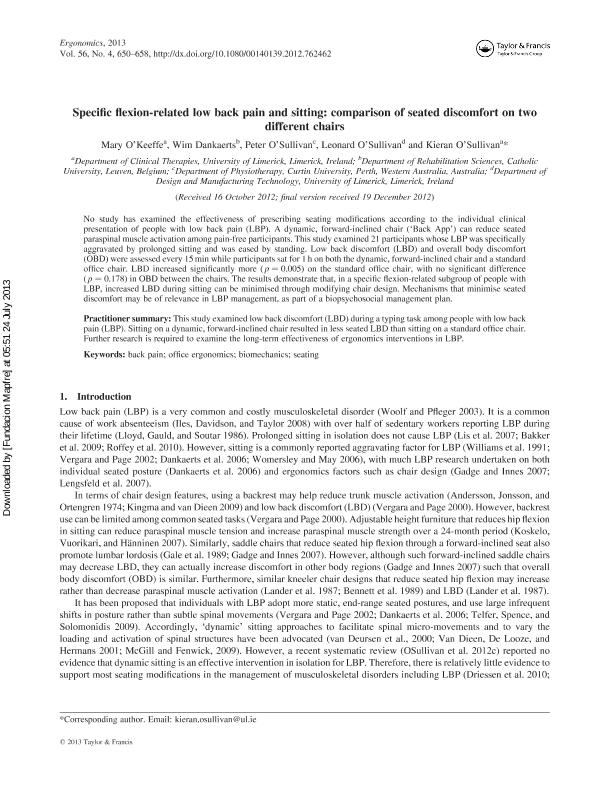Specific flexion-related low back pain and sitting : comparison of seated discomfort on two different chairs

Contenido multimedia no disponible por derechos de autor o por acceso restringido. Contacte con la institución para más información.
| Tag | 1 | 2 | Valor |
|---|---|---|---|
| LDR | 00000cab a2200000 4500 | ||
| 001 | MAP20130022482 | ||
| 003 | MAP | ||
| 005 | 20130724153318.0 | ||
| 008 | 130724e20130401esp|||p |0|||b|spa d | ||
| 040 | $aMAP$bspa$dMAP | ||
| 084 | $a875 | ||
| 245 | 0 | 0 | $aSpecific flexion-related low back pain and sitting$b: comparison of seated discomfort on two different chairs$cMary O'Keeffe...[et.al] |
| 520 | $aNo study has examined the effectiveness of prescribing seating modifications according to the individual clinical presentation of people with low back pain (LBP). A dynamic, forward-inclined chair (Back App¿) can reduce seated paraspinal muscle activation among pain-free participants. This study examined 21 participants whose LBP was specifically aggravated by prolonged sitting and was eased by standing. Low back discomfort (LBD) and overall body discomfort (OBD) were assessed every 15 min while participants sat for 1 h on both the dynamic, forward-inclined chair and a standard office chair. LBD increased significantly more (p = 0.005) on the standard office chair, with no significant difference (p = 0.178) in OBD between the chairs. The results demonstrate that, in a specific flexion-related subgroup of people with LBP, increased LBD during sitting can be minimised through modifying chair design. Mechanisms that minimise seated discomfort may be of relevance in LBP management, as part of a biopsychosocial management plan. | ||
| 773 | 0 | $wMAP20100019818$tErgonomics : the international journal of research and practice in human factors and ergonomics$dOxon [United Kingdom] : Taylor & Francis, 2010-$x0014-0139$g01/04/2013 Volumen 56 Número 4 - abril 2013 , p. 650-658 |

